The Etosha National Park is one of the most important protected land areas and is located in the north of Namibia, a country in southwest Africa with an extension of more than 22,000 km². Characterized by its arid landscapes and its hot climate that at the height of summer reaches temperatures up to 47 °C Among the vegetation that predominates the savannah is the mopane, the acacia, the red bush, the tamboti, and the moringa.
Etosha means the great white place and owes its name to an ancient saline lake, which covers a quarter of the park, known as the Etosha Salt Flat. Due to environmental changes, it began to evaporate until only a large salty area was left where no vegetation can survive. When it rains it is covered by a thin layer of water, but very quickly the level drops below the ground and the salts are deposited on the surface.
Map of Etosha National Park, the great white spot. Photo (Google)
Nonetheless, Etosha shelters dozens of mammals, various species of reptiles and amphibians, more than 300 species of birds and one of fish. The main attraction of the national park are the large mammals, which are relatively easy to see, especially during the dry season when they are concentrated in the pools south of the Etosha salt pan.
Large mammals include giraffes, zebras, herds of elephants, springbok, kudu, impala, oryx, wildebeest and eland which abound in the savannah. It is home to the largest population of cheetahs and black rhino, the latter in danger of extinction. Large predators like lions, leopards, and smaller predators like the black-backed jackal can also be seen. Often these hunters uThey use water holes as hunting grounds.
Pictures of Etosha National Park
Enjoy these high resolution photos of Etosha National Park
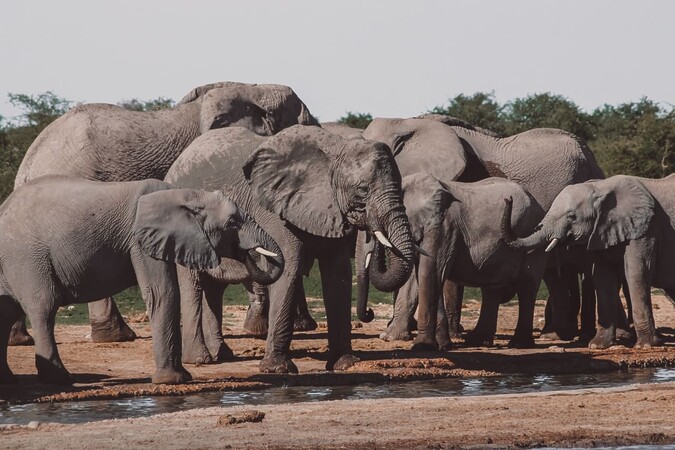
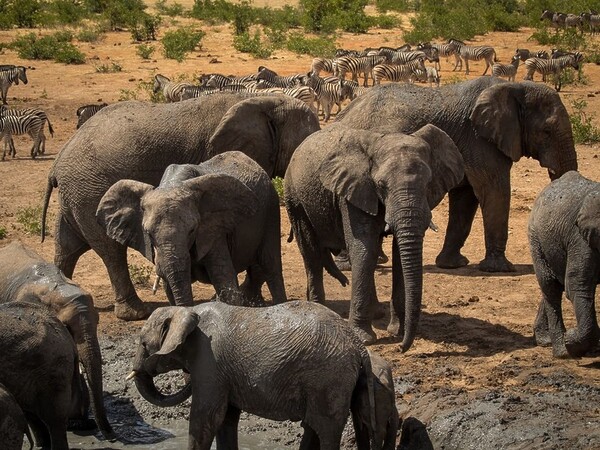
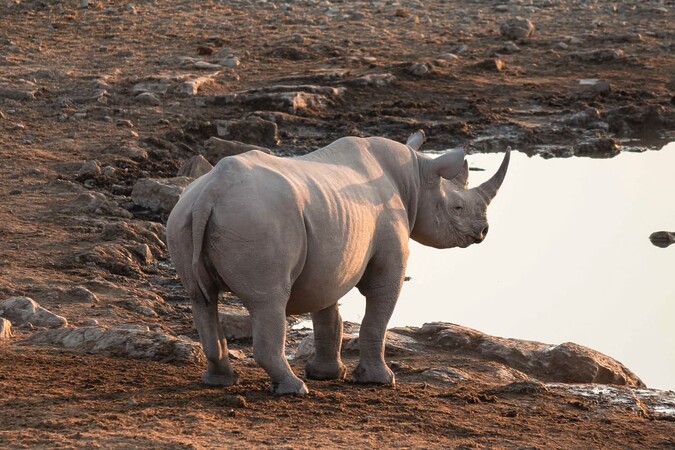
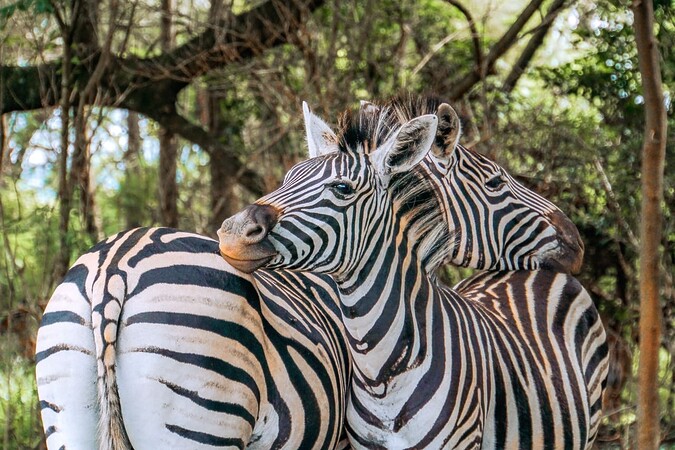
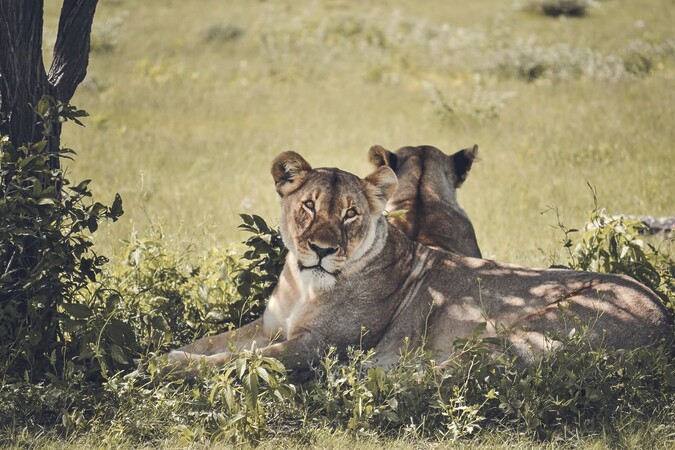
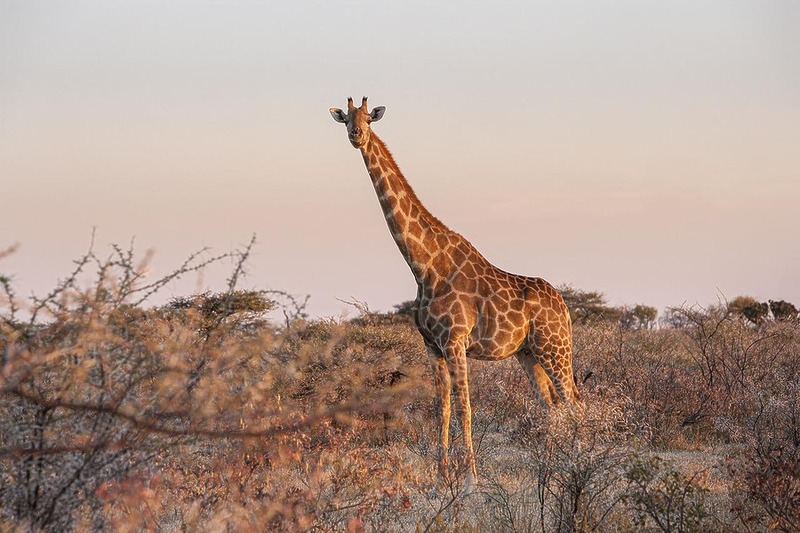
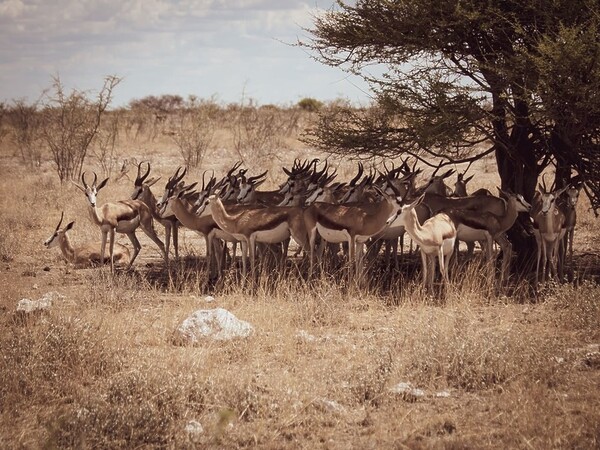
Likewise, the gray guinea fowl or guinea fowl, Cape turtle doves that descend in groups to drink water and guard against predators, the forked drongo that does not perch to drink water, white crows, namaqua sandgrouse, gabar hawk, light black little bustard warthog or warthog and aquatic turtles.
Animals like giraffes and oryx can withstand the water shortage and going several days without drinking it, since their diet provides them with the water they need, in the case of giraffes, acacia leaves and wild melon oryx and tubers that they unearth from the ground, in addition to limiting sweating and conserving urine to minimize water wastage. However, in times of drought these foods are usually scarce and offer little moisture to these animals. Quite different from elephants who are totally dependent on water.
Throughout the dry seasons, the many wells or pools scattered among the forests with low scrub and savannah become the source of life in the park, attracting a variety of visitors. animals that gather to drink water. However, nutrients are also a concern that is in short supply and determines the survival of each species, forcing them to travel long distances in search of food. As each animal needs water and food, there is a constant back and forth between the water holes and the search for food.
Etosha exhibits its greenest face during periods of heavy but sporadic rain, the intensity begins to decrease towards the end of this season. Likewise, it is the time when migratory birds arrive from Europe and the animals have their young, providing them with greater chances of survival, due to this, life is more abundant throughout the park.
